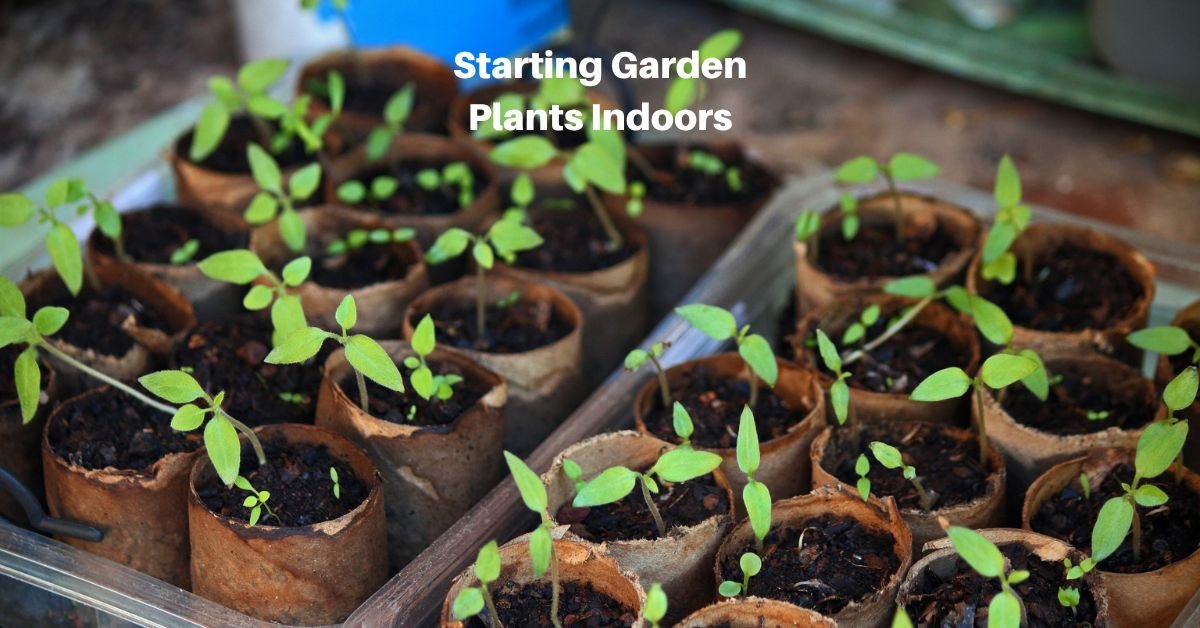As winter covers your garden in its frosty embrace, you can find solace and opportunity in the cozy confines of your home. This period doesn’t have to be a time for rest; it’s an excellent moment for preparation and anticipation. Starting your seeds indoors is crucial during these colder months, laying the groundwork for a bountiful and prosperous spring season.
Selecting Suitable Plants for Early Starts
Weather conditions don’t stay optimal for some plants to develop fully. Others prefer mild spring weather but can’t stand the cold of winter or heat of summer, but that brief, pleasant period is too short for them.
Tomatoes, peppers, eggplants, and various leafy greens like kale and Swiss chard are great candidates. These plants benefit significantly from a head start, maturing faster and yielding harvests sooner. Herbs like basil and cilantro indoors are also good candidates for an indoor start so that they can add fresh flavors to your early spring meals.
Understanding Timing for Optimal Growth
Timing is a critical aspect of indoor seed starting. The key lies in synchronizing your seed starting with the natural cycles of the seasons. Most – but not all – vegetables should be sown 4-8 weeks before your area’s last expected frost date. Be sure to check the needs of what you want to plant for the best plan!
This timing ensures that your seedlings are mature enough for transplanting but not so overgrown that they suffer from being confined in small containers.
Setting Up Your Seed Starting Environment
Your indoor seed starting setup can be simple, but it should be effective. Key components include:
Seed Starting Mix: Choose a high-quality seed starting mix, which is typically lighter and more sterile than regular garden soil. This mix provides the ideal environment for young roots to grow.
Containers: Use containers with good drainage, like seed trays or individual pots. Reusable or biodegradable pots are both great options.
Lighting: A sunny window can work, but for more consistent results, especially in regions with less winter sunlight, consider investing in grow lights. They provide the intensity and spectrum of light that seedlings need to develop robustly.
Germination and Early Seedling Care
Plant your seeds to the depth and spacing recommended on the seed packet. Keep the soil consistently moist, a necessity for germination, but be cautious of overwatering. A fine mist or a watering tray can help keep moisture levels optimal.
Once seeds have germinated, they need lots of light—around 12-16 hours per day. Regularly rotating the plants can prevent them from leaning excessively towards the light source and promote even growth.
Hardening Off: Preparing for the Outdoors
Hardening off is crucial for transitioning indoor-started plants to outdoor conditions. Gradually expose your seedlings to the outside environment over a week. Start with a few hours in a sheltered spot, then progressively increase their time outdoors. This step helps them adjust to the elements, reducing the risk of transplant shock.
The Transplanting Process
When it’s time to transplant, look for a cool, overcast day to minimize stress on your seedlings. Handle the roots gently to avoid damage, then water them thoroughly after planting to help settle the soil around the roots.
Providing some initial shade to the newly transplanted seedlings for a few days is also a good idea.
Post-Transplant Care and Monitoring
After transplanting, take these simple steps:
- Monitor your plants closely.
- Keep the soil moist.
- Take corrective action promptly if you notice any signs of stress, like wilting or yellowing leaves.
- Gradually reduce any shading you provided to acclimate the plants to full sun exposure.
Common Challenges and Solutions
Indoor seed starting has its challenges, too. A common issue is leggy seedlings. They become top-heavy because their stems can’t support their weight. This often results from inadequate light. If this happens, consider upgrading your lighting setup.
Another issue is damping-off, a fungal disease that affects seedlings. It can be mitigated by ensuring proper air circulation and not overwatering.
Starting seeds indoors is a fulfilling and practical way to jumpstart the gardening season. With the right plants, timing, and care, you can nurture a thriving garden that begins in the heart of your home and extends its roots into the warm soil of spring. As the last frost recedes and the first green shoots appear, the fruits of your winter labor will be evident in your garden’s lush growth and abundant harvests.









